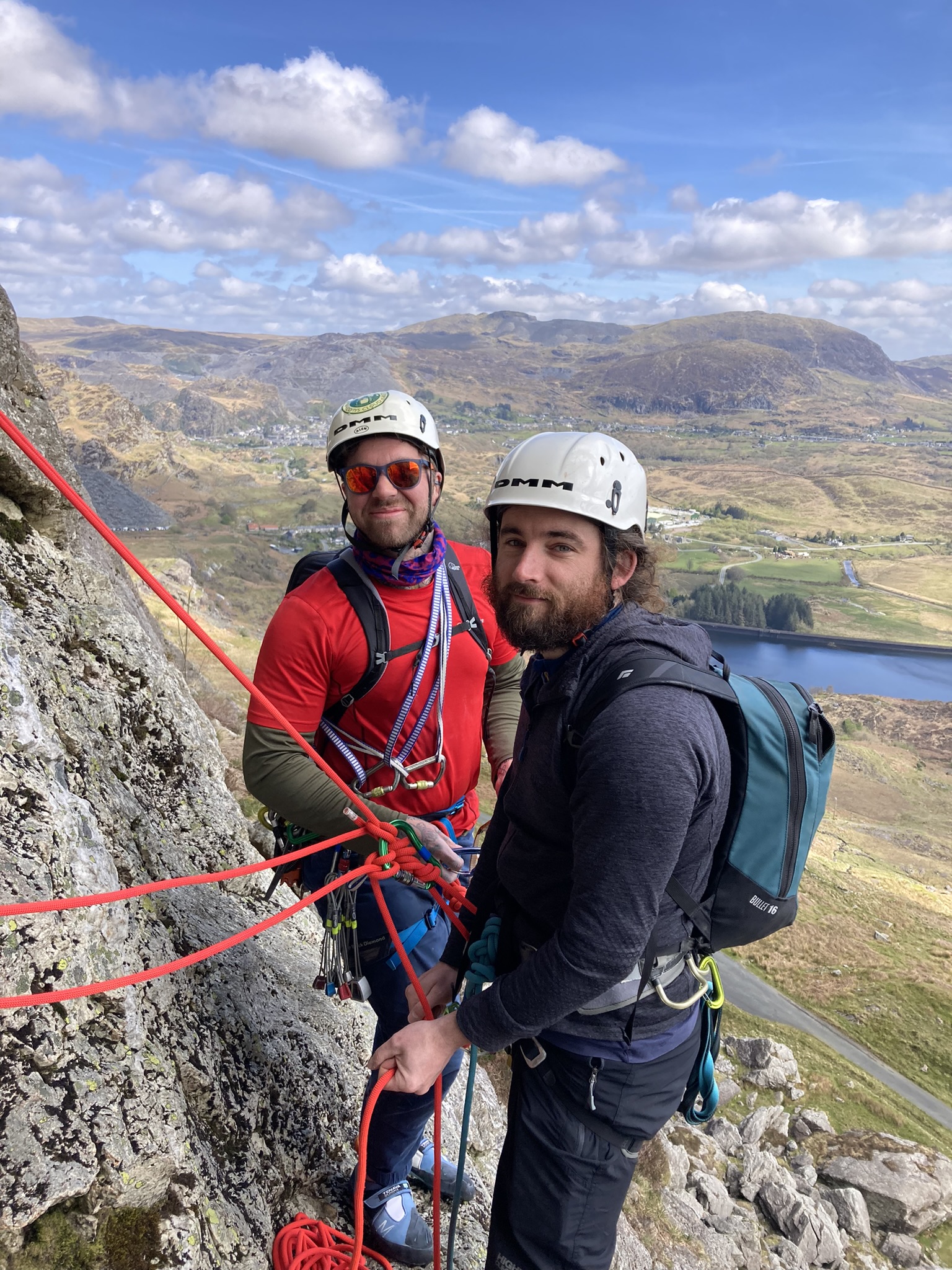+44 7881 845494

Review
5 day learn to lead / trad refresher
Amazing 5 days climbing in Wales! Bob's depth of knowledge, professionalism and calm, friendly nature makes you feel in safe hands and allows you to really enjoy the climbing experience. For me this made it easier to learn in a stress free environment. I was really impressed with Bob's ability to assess our climbing level and choose appropriate routes.
The progression throughout the week was spot on. It was challenging but never did I feel too far out of my depth. Bob's teaching ability is second to none, I have no doubt Bob gave us all the information and taught us all skills needed to be able to confidently go out and enjoy climbing safely on our own.
A truly unforgettable experience, in a beautiful place. I would 100% recommend. Thanks Bob!
Aaron
"Things Bob taught me"
How to build as safe belay, using the 1-5 rating system for each piece of gear, a score of 9 as the minimum fort belay.
How to place gear correctly and how to assess how good it is, for examplegood camming position, if placed horizontally the wide lobes should be on the bottom to reduce chance of the gear walking. Surface area in contact with rock and snug fit for nuts, also
direction of load on the gear.

How to test a slingover a spike by sawing it to see if it moves.
How to clove hitch a sling to a spike.
How to place a nut in the gap above a sling placement, to improve the safetyrating of the gear by double
How to test for loose rocks before placing gear in/on them by giving them agood slap and try to wobble.
The anagram IDEAL, Independent, Direction, Equalised, Angle (no more than 90 degrees) Loaded.
The anagram ABC, Anchor, Belay, Climber.
That it is very important to place a really solid piece of gear as your first piece on a pitch, to minimise chance of unzipping.
How to belay safely from a top rope position, making sure to cross hands sothere is always a hand on the dead rope/brake.


How to back up a abseil by someone at the bottom pulling the rope tight.
How to back up an abseil with a prusik.
How to correctly back to back two wiregate carabiners
How to place draws correctly to try to keep the rope straight as possible.
How to tie a cows tail with a knot a 3rd of the way up with a locking carabiner to make getting in place to abseil off tat safe.
What a mallion is.
How to route read and use a guide to find which climb you are going to do.
When you bring the second up on belay you should set up the belay so they are on the correct side to climb through and lead the next pitch.
How to look for the next gear placement when leading, while assessing your run out and fall factor, combined with climbing ability.
How to make an alpine draw smaller by passing one carabiner through the other and cliping the loop.
How to turn your rope into a backpack to make it easier to carry.
How to take coils and to tie it to your harness loop to stop it from strangling you.
How to use a rope to protect you in a scrambing situation by wrapping ropearound spikes and stopping a slip turning into a fall.
What to expect from a grade 3 scramble, how to assess when you need tostop and make a belay when it becomes climbing rather than scrambling.
The importance of keeping calm and breathing.
How to neatly arrange your gear on your harness for ease of use.
Bonus environment points
What alpine clubmoss looks like
The story about the Darwin boulders
The fact that during the war precious works of art were hidden in the manymiles of tunnels in the welsh mines.
The welsh for Happy, Happis
Rock formations due to raining lava.
How to identify a wheatear
